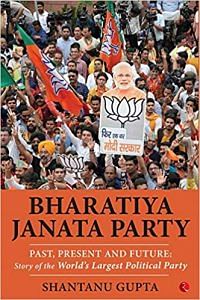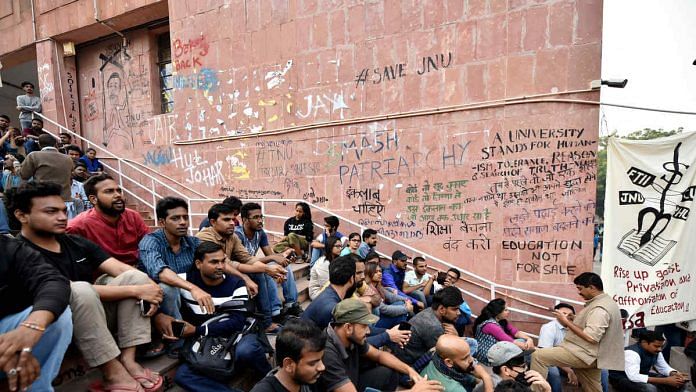The power struggle between Indira and the Syndicate did not stop even after the latter lost the 1967 elections. The Syndicate got Morarji Desai to be the finance minister and the deputy PM. Indira converted the power struggle into a matter of policy and programmes, and made the Congress Working Committee adopt a ten-point programme that was to become her trump card in the future power struggle. The nationalization of banks and insurance companies, state trading in import and export trade, the public distribution system, tight control on the business houses and the abolition of privy purses became the tolls in her ‘garibi hatao’ slogan.
Though forced to accept Morarji as her deputy PM, the electoral setback for the Congress in 1967 enabled Indira to emerge a leader on her own merit. Her power struggles with the syndicate, comprising K. Kamaraj, S. Nijalingappa, S.K. Patil, Atulya Ghosh and N. Sanjeeva Reddy, continued for two years and more without resolution. The presidential election after the death of Zakir Husain in 1969 led to an open fight between the syndicate and Indira. The former decided on the candidature of Neelam Sanjiva Reddy for the post of president. Just after five days of this decision, on 18 July 1969, she dismissed Morarji from the Cabinet and kept the Finance portfolio with herself. On 21 July 1969, she announced the nationalization of fourteen banks through a presidential ordinance. Later, she announced the withdrawal of privy purses. Thus she garnered the image of a progressive leader among the masses. Indira openly opposed Reddy and supported the candidature of then Vice-President V.V. Giri for the position of India’s president. To ensure Giri’s victory, she appealed to the electoral college to vote according to their conscience, and by a narrow margin V.V. Giri was elected as the President of India on 20 August 1969.
The simmering tension within the Congress led to a formal split in the first week of November 1969. Of the 288 members in the Parliament, 220 supported Indira and the remaining sixty-eight were with the syndicate. Of the 705 of the All India Congress Committee, 446 went with Indira. The government lost its majority and the minority government survived with the support of the CPI, the DMK and the independents. This split was projected by spin doctors as the battle between the progressive and the conformist lobbies, and projected Indira as a pro-poor, anticapitalist and progressive leader. The communist intellectual lobby was instrumental in painting this rosy picture.
This political support from the Left to the Congress government was the start of the capture of the Indian academia by it. It started with the Jawaharlal Nehru University (JNU), the brainchild of Indira Gandhi and her education minister, Syed Nurul Hasan. It was floated on the lines of colonial Britain’s Haileybury College, to produce and train what Indira believed would form the core of a ‘committed bureaucracy’—committed primarily to her and the idealism of leftists. Remember that the JNU came up at a time when the CPI supported PM Indira’s ‘government’ after her differences with the syndicate. The institution turned a deep shade of red thanks to the curricula and faculty carefully chosen by Hasan from his pool of pro-CPI teachers. Over the years, many of the faculty posts were held by the Left or liberal academics.
Dr Chandan Mitra writes that in the initial years, the JNU was peopled mostly by products of ‘elite’ institutions such as Delhi’s St Stephen’s College, who volubly mouthed ‘revolutionary’ slogans but in practice served the Indian state’s objectives with full gusto by joining the civil services in hordes. But the churning of the polity leading to the proclamation of the Emergency, and Indira’s spectacular defeat in the 1977 elections, jolted the JNU out of its complacency.
Dr Mitra further elaborates that the Morarji government, with its pro-right education minister Triguna Sen, had no time for longhaired, jhola-carrying agitators that the JNU produced en masse. It was a surprise for the BJS leaders that almost every member of the university’s faculty was a card-carrying communist. Professor Hasan’s dominance over the university-faculty-recruitment system in the country, especially in prestigious national institutions, ensured that new recruits to the teaching community consisted primarily of those who failed to get selected to the civil services but made for excellent cannon fodder in the Left’s war against the Janata Party regime.
Also read: Why and how ideology is central to winning elections in India
The BJS was the only ideological component of the Janata Party and erstwhile BJS members led the ideological war against the JNU’s Left ideology. This clash often spilt over to the streets, especially over the Morarji government’s determination to revise the curricula and replace Marxist historiography with a nationalist variant. But when Indira returned to power in 1980, she assiduously worked to restore the JNU’s leftist DNA. A dissipated and rudderless Opposition collapsed before her aggressive dismantling of the education system that the Janata Party had tried to put together as an alternative to the Congress-Le” structure. For a brief while, Sanjay Gandhi waged war on the communists, but they were back in favour after his untimely death. The subsidies returned, and the patronage and favours in the education hierarchy were restored. And this system stayed relatively undisturbed over the next few decades.
 This excerpt from the book Bharatiya Janata Party: Past, Present and Future: Story of the World’s Largest Political Party by Shantanu Gupta has been published with permission from Rupa Publications India.
This excerpt from the book Bharatiya Janata Party: Past, Present and Future: Story of the World’s Largest Political Party by Shantanu Gupta has been published with permission from Rupa Publications India.




how India see this ? India see it as bunch of freeloaders brought up by subsidy and free rice waging war on country. At the end tax payers like me want to see this establishment brought down systematically.
Your color itself says u want JNU to be safforinised and you can’t even talk without hinting Older government,pakistan,hindu Rashtriya…….u will see reason of and cause your birth from your grand father instead your father…….You are not The print u r a puppet of ……